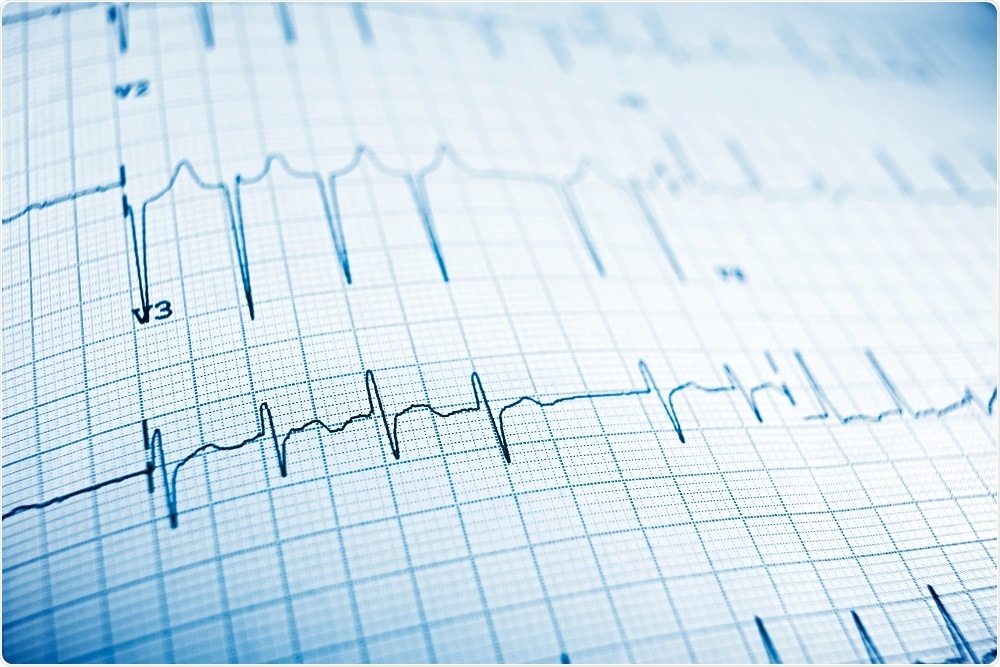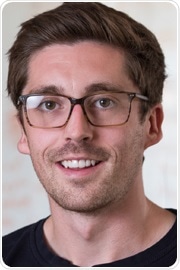An interview with Dr. Ross Upton, conducted by Kate Anderton, BSc
What are the risk factors for coronary heart disease?
50 percent of males over 40 and 33 percent of females over 40 will get coronary heart disease at some point in their lives. It is the number one cause of death in both the US and UK.
 Image Credit: pedrosala / Shutterstock
Image Credit: pedrosala / Shutterstock
How is coronary heart disease currently diagnosed?
When a patient comes in with chest pain, the majority are referred for a stress echocardiogram. An echocardiogram is another name for cardiac ultrasound. Cardiologists will speed the heart up with exercise or a pharmaceutical agent and take ultrasound images at rest and stress, before comparing them and making a diagnosis by eye.
Why is it important to develop new methods for identifying patients at risk of coronary heart disease?
The current diagnostic accuracy of echocardiograms in clinic is only 80 percent, meaning one in five patients are misdiagnosed. Patients are either sent to have an unnecessary surgical procedure or sent home when they have the disease – which can be fatal.
In the UK, this misdiagnosis costs the NHS £300m a year. The development of a diagnostic support tool would indicate which patients have significant disease and provide clinicians with reassurance when making a diagnosis.
What is Topological AnalysisTM?
Topological analysis is a new method to diagnose heart disease. It provides a multi-feature analysis of heart wall geometry, many of which haven’t been measured before in the context of cardiovascular imaging.
Machine learning, a type of AI, is then used to develop an algorithm linking patient outcome data and the best combination of features to predict whether patients have significant disease. Subsequently, it delivers a highly reproducible and accurate assessment of the presence of coronary artery disease.
How does Topological AnalysisTM compare to traditional echocardiograms?
In traditional stress echocardiograms clinicians make the diagnosis by eye, meaning that they are only 80 percent (at best) accurate in detecting significant disease.
Our platform works with existing echocardiogram technology and will fit directly into the clinician workflow. It will not replace clinicians, but it will provide support to the clinician to make a more accurate, reproducible diagnosis.
What does the future hold for Ultromics and Topological AnalysisTM?
The research trial for this technology is running in six hospitals across the UK and will be expanding to 20 this year. We are aiming to bring this technology to both the UK and US markets within the next year so that we can dramatically improve patient outcomes and deliver significant cost savings to healthcare systems.
Where can readers find more information?
The Ultromics Website
About Dr. Ross Upton
 Ross is passionate about computational technologies, with a particular focus on diagnostic algorithms within cardiovascular imaging. He is the CEO of Ultromics, an Oxford-based company that leverages AI-based diagnostics and the world’s largest commercially consented echo database, which he co-founded with Professor Paul Leeson.
Ross is passionate about computational technologies, with a particular focus on diagnostic algorithms within cardiovascular imaging. He is the CEO of Ultromics, an Oxford-based company that leverages AI-based diagnostics and the world’s largest commercially consented echo database, which he co-founded with Professor Paul Leeson.
Ross has completed two MSc degrees and a DPhil, he has received multiple grants for technology innovation and was a finalist of the Young Investigator Award in 2015.